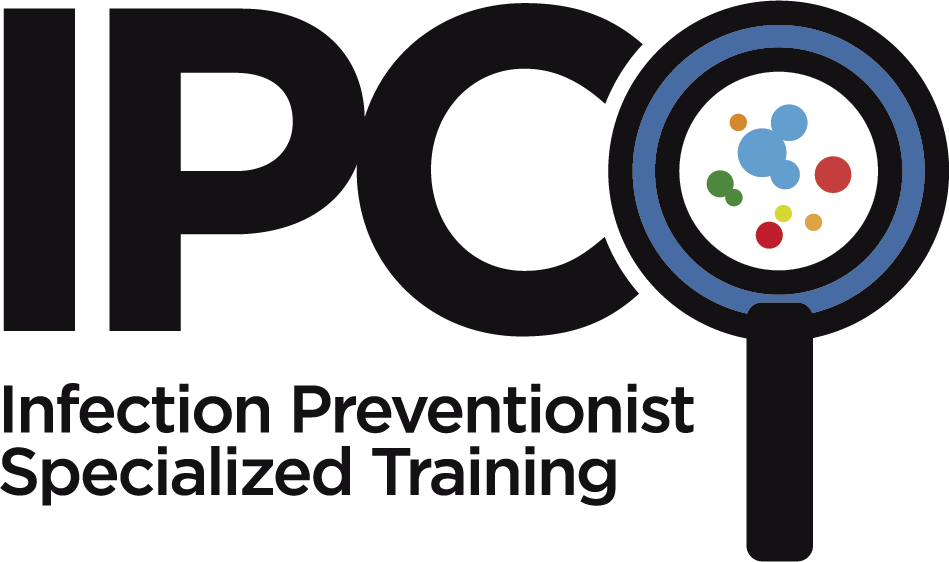 Enhanced barrier precautions (EBP) are part of life in long term and post-acute care, but recent updates to the State Operations Manual (SOM) suggest this is a good time for a fresh look at EBP and how staff use them to protect residents, visitors, and themselves. It also presents an opportunity to review and update policies, procedures, and training, and to seek opportunities for quality-improvement activities related to infection prevention and control.
Enhanced barrier precautions (EBP) are part of life in long term and post-acute care, but recent updates to the State Operations Manual (SOM) suggest this is a good time for a fresh look at EBP and how staff use them to protect residents, visitors, and themselves. It also presents an opportunity to review and update policies, procedures, and training, and to seek opportunities for quality-improvement activities related to infection prevention and control.
ABCs of EBP
The Centers for Disease Control and Prevention (CDC) introduced EBP as a new approach to using personal protective equipment (PPE) in 2019. The CDC defined EBP as “an infection control intervention designed to reduce transmission of multidrug-resistant organisms (MDROs) in nursing homes. Enhanced barrier precautions involve gown and glove use during high-contact resident care activities for residents known to be colonized or infected with a MDRO as well as those at increased risk of MDRO acquisition (e.g., residents with wounds or indwelling medical devices).”
In 2022, the CDC released updated EBP recommendations for nursing homes, stating that EBP “may be indicated (when contact precautions do not otherwise apply) for residents with wounds or indwelling medical devices, regardless of MDRO colonization status or infection or colonization with an MDRO.” The CDC also said that effective EBP implementation requires staff training on the use of PPE and hand hygiene supplies at the point of care, with standard precautions continuing to apply to all residents, regardless of suspected or confirmed colonization status.
After the CDC’s announcement, the Centers for Medicare & Medicaid Services (CMS) updated its infection prevention and control guidance. In a 2024 memo, the agency stated, “The recommendations now include the use of EBP during high-contact care activities for residents with chronic wounds or indwelling medical devices, regardless of their MDRO status, in addition to residents who have an infection or colonization with a CDC-targeted or other epidemiologically important MDRO when contact precautions do not apply.” This language was included in revisions to SOM Appendix PP (QSO-25-14-NH), FTag 880 (Infection Prevention and Control) and went into effect April 28, 2025.
It is worth noting the difference between EBP, standard precautions, and contact precautions. Standard precautions apply to care for all residents, calling for the use of PPE to protect against blood, body fluids, secretions, and/or excretions. For instance, gloves are recommended when there is likely to be contact with blood or other potentially infectious materials, mucous membranes, non-intact skin, or contaminated equipment. Standard precautions still apply when using EBP.
Contact precautions involve the use of gown and gloves every time team members enter a resident’s room, no matter what care they are providing. Ultimately, EBP are more specific than standard precautions but less restrictive than contact precautions.
Time for Attention
 Calvin Reynek, RN, IP-BC, AS-BC, CADDCT, QAPI-BC, a nurse consultant for Pathway Health, observed that the revised guidance from CMS regarding infection prevention and control shouldn’t come as a surprise. “CDC has been recommending this for some time; then COVID-19 hit, and it got put on the back burner,” he said.
Calvin Reynek, RN, IP-BC, AS-BC, CADDCT, QAPI-BC, a nurse consultant for Pathway Health, observed that the revised guidance from CMS regarding infection prevention and control shouldn’t come as a surprise. “CDC has been recommending this for some time; then COVID-19 hit, and it got put on the back burner,” he said.
However, he noted that complying with the SOM changes calls for facilities to get their teams—including frontline workers and family members—on board and engaged. “This is a big change for staff, and they need to feel confident about when they need to use EBP. You need to make sure your policies and procedures reflect these changes,” he added.
Staff also need to know before entering a resident’s room what infectious illnesses or conditions the resident has and if EBP are required. To protect residents’ privacy, as well as their dignity, this notification may be a code posted on the person’s door and written in the chart that alerts staff that EBP are needed. It also is important for both residents’ families and the residents themselves to understand why staff are using EBP while working with them.
“Family members often are challenged to understand the different types of precautions. For example, they will ask us why we are not using the same precautions that were used in the hospital. However, those are contact precautions, not EBP, which are less restrictive,” said Anna Fisher, PhD, Nebraska-based clinician and educator.
Nursing homes are different from hospitals and have specific policies, protocols, and requirements designed to keep residents as safe as possible and to maximize the homelike environment. Fisher observed, “It is important for everyone to understand that infection prevention and control is vital in all aspects of health, and we all play a role. It is not a one-size-fits-all effort.”
Educating and Auditing
While training and education takes time, you don’t have to reinvent the wheel. There are numerous resources. For instance, the CDC has a page of links to videos, posters, and a pocket guide, as well as FAQs and other information and resources on enhanced barrier precautions in nursing homes.
 The American Health Care Association (AHCA) has Infection Preventionist Specialized Training (IPCO) for individuals responsible for infection prevention and control in all long term care settings. The program, specifically tailored to train infection preventionists (IPs), covers COVID-19, other common pathogens, multidrug-resistant organisms, antibiotic stewardship, water management, and more. The National Center for Assisted Living has an Infection Preventionist Specialized Training (IPCO) for Assisted Living, a specialized course of study for health care professionals who are interested in serving as infection prevention control officers (IPCOs) in assisted living communities.
The American Health Care Association (AHCA) has Infection Preventionist Specialized Training (IPCO) for individuals responsible for infection prevention and control in all long term care settings. The program, specifically tailored to train infection preventionists (IPs), covers COVID-19, other common pathogens, multidrug-resistant organisms, antibiotic stewardship, water management, and more. The National Center for Assisted Living has an Infection Preventionist Specialized Training (IPCO) for Assisted Living, a specialized course of study for health care professionals who are interested in serving as infection prevention control officers (IPCOs) in assisted living communities.

“With the Appendix PP guidance updates bringing increased attention to the use of EBP, now is an excellent time for nursing homes to review their policies, procedures, and training addressing enhanced barrier precautions,” said Amy Miller, RN, BSN, RAC-CT, CPC, director of clinical and regulatory services at AHCA. “Staff need to know the proper use of personal protective equipment for residents on enhanced barrier precautions, including proper hand hygiene practices,” she added, stressing that PPE must be readily accessible. She suggested that this presents a good opportunity to talk to staff and maybe even residents and families about multidrug-resistant organisms and antibiotic stewardship.
After training, surveillance and audits will be needed to ensure staff are consistently compliant and to identify improvement opportunities. Facilities can then implement action plans based on their findings. “For example, auditing practices around care of residents with indwelling devices and use of enhanced barrier precautions is an important area to include,” said Miller.
Training and education need to be consistent. “The team needs to be on the same page and supporting the IP in their efforts,” said Kristi Felix, MSN, RN, CRRN, CIC, LTC-CIP, FAPIC, an infection prevention manager in Nebraska.
When audits or surveillance identify noncompliance or other issues, identifying the reason behind the issues and not playing the blame game is critical. Reynek, of Pathway Health, said, “If people aren't afraid of getting in trouble, they’re more motivated to do the right thing and report if they make errors or have problems. You also need a culture where team members aren’t afraid to ask for more training or education if they feel like they need it.”
Staff need to be responsible for protecting their colleagues, as well. This means replacing PPE if the last piece is used. To help ensure compliance, added Colleen Toebe, MSN, CWCN, RAC-MTA, RAC-MT, DNS MT, vice president of clinical services at Pathway Health, “make sure you share the why with staff—that is, why they’re doing this, including the dangers of MDROs and the importance of protecting residents, as well as their staff and own families.”
In training, Toebe shared, she puts powder on a mannequin and has participants pretend they are handling common care tasks without a gown. “I then turn on a black light that shows what they are taking with them to the next patients and to their families at the end of their shift,” she said.
Reynek stressed that training for infection prevention and control, including EBP use, is for everyone in the building, not just clinical staff. “It doesn’t matter if you’re in the business office or in the kitchen,” he said. “We all have levels of contact with staff and residents. And this training must be continuous.” The instruction should start as part of onboarding and staff orientation, but it needs to be ongoing.
Felix agreed, saying, “At some point, all staff members might perform some type of high-contact tasks.” The training and clear communication will help ensure everyone understands what to do, why, and how.
The surveillance and audits will verify that staff members are putting that training into action. Ensuring the entire team has the knowledge, tools, and resources to successfully protect residents and others also helps promote engagement and job satisfaction.
“If they have what they need to perform their jobs well and feel valued as team members, they are more likely to enjoy their work. This promotes retention,” said Fisher.
The Proof Is in the Pudding—That Is, the Documentation
When surveyors come in, they will be reviewing documentation for evidence of what has—and hasn’t—happened in the facility. Therefore, staff must understand what should be documented and where they need to document EBP use and other aspects of infection prevention and control. This should start with training.
“We document when staff have been trained on infection and control policies,” Felix explained. “This shows that they understand these policies, have the knowledge and training to fill their roles, and know how and when to use PPE. This documents compliance for surveyors,” she added.
Toebe suggested, “Review the clinical element pathways in the SOM, updated in April 2024, and check to determine that your team is documenting everything correct.” Audits that check to ensure that documentation shows what is actually happening in the building can help identify gaps.
“I’ve seen places where staff are doing an outstanding job of infection prevention and control, but the documentation doesn’t reflect it,” she said.
 Having a realistic, complete view of EBP use in your buildings is key to assessing quality. For instance, you need current and accurate information about how many residents you have with indwelling devices and wounds. You also need to know how many individuals have antibiotic prescriptions or infections such as Clostridium difficile, which affects people who have recently taken antibiotics and may indicate an MDRO. This can help determine what kinds of resources you need and what inventory of PPE you need to maintain.
Having a realistic, complete view of EBP use in your buildings is key to assessing quality. For instance, you need current and accurate information about how many residents you have with indwelling devices and wounds. You also need to know how many individuals have antibiotic prescriptions or infections such as Clostridium difficile, which affects people who have recently taken antibiotics and may indicate an MDRO. This can help determine what kinds of resources you need and what inventory of PPE you need to maintain.
For instance, Felix noted, “We have a skilled ventilator unit with a number of residents on medical devices that are necessary to keep them alive. As a result, over half of our residents require EBP.” This can be costly and time-consuming, but if you have accurate, real-time data and can track trends, it is easier to stay on top of EBP use.
If you discover there are gaps or red flags, this presents an opportunity for quality improvement. In one study, researchers implemented a quality-improvement effort using a “4E” process (engagement, education, execution, evaluation) to improve EBP use in four nursing homes. They found that implementing the 4E process resulted in increased glove and gown use. Participants indicated that one motivating factor to improve EBP use was the perception that it can help reduce the incidence of MDRO transmissions.
Reynek said, “To bridge the gaps, you have to get your leadership team out on the floor and model the practices you want staff to follow. The more you practice effective, appropriate EBP use, the more it becomes second nature.”
He added, “You should be able to see your staff don a gown and gloves as easily and naturally as they put on their shoes in the morning. When you do this, you always have that level of survey readiness.”
All Hands on Deck
CMS requires each nursing home to have an infection preventionist, part of whose work must be based on health care-associated infection risk assessment. While the IP has a key role in ensuring appropriate EBP implementation, this must be a team effort.
Read more:
Data as Infection Control Tool
EBP and MDROs